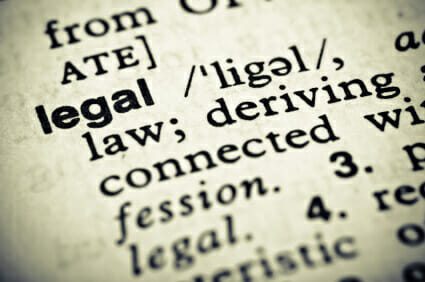Defining, Determining, and Proving Negligence

Personal injury cases rely on an attorney’s ability to define, determine, and prove negligence – and while proving negligence may seem simple or even self-evident at first glance, the truth is that a plaintiff’s attorney must meet multiple legal standards before a case of negligence can even be considered.
Below is a short explanation of what is required to establish a prima facie case of negligence. A successful personal injury attorney will seek to establish these qualifications before moving forward on your case.
What is the Legal Definition of Negligence?
The Legal Information Institute defines negligence as a failure to behave with the level of care that a reasonable person would have exercised under the same circumstances. While the behavior in question usually consists of actions, it can also consist of omissions when there is some duty to act.
When attempting to ascertain whether a person’s conduct or behavior lacked reasonable care, lawyers will consider the four elements that are required to establish a prima facie case (a legally required rebuttable presumption). The elements are:
- The existence of a legal duty that the defendant owed to the plaintiff
- The defendant’s breach of that duty
- The plaintiff’s sufferance of an injury
- Proof that the defendant’s breach caused the plaintiff’s injury
Determining the Existence of a Legal Duty
When considering how to determine negligence, the first step is to establish the existence of a legal duty that the defendant owed to the plaintiff. In law, there are two kinds of duty that can be owed:
- Duty of Care: A duty to conduct oneself in a manner that a person of ordinary prudence, acting under similar circumstances, would conduct himself. (i.e. Would a reasonable person have acted the way the defendant acted while operating a motor vehicle if the reasonable person was operating a motor vehicle under circumstances similar to those as the defendant?)
- Special Duty: A duty imposed by a statute or case law which may exist either in addition to or in place of general duty of care. (i.e. A statute requiring drug manufacturers to list possible side effects, contraindications, and warnings on product labels.)
To determine whether a general duty of care or a special duty was owed, lawyers and courts look at the relationship between the plaintiff and the defendant and identify if a duty was owed based on that relationship.
The Hand Formula: Determining if a Breach Occurred
The next step in establishing a prima facie case of negligence is to determine whether the defendant has breached a duty. To do this, courts often apply the Hand Formula.
The Hand Formula was first used by Judge Learned Hand in United State v. Carroll Towing and says that if the burden of taking precautions is less than the probability of injury multiplied by the gravity of any resulting injury, then the party with the burden of taking precautions has some amount of liability.
The formula can be simplified as B < PL with B representing burden of taking precautions, P representing the probability of personal loss, and L representing the gravity of personal loss.
Determining if a Plaintiff Suffered Injury
The next step in analyzing a case of negligence is establishing that there was, in fact, an injury. In a case of negligence, injury must be one of two things:
- Bodily Harm
- Harm to Personal or Real Property
Common examples of bodily harm cited in personal injury cases are:
- Fractures and soft tissue damage
- Traumatic brain injuries
- Back and neck injuries
- Development of adverse health conditions (i.e. cancer/kidney damage/heart attack)
- Delayed or failed diagnosis of a detrimental medical condition
- Wrongful death
While pure economic loss often fails to meet the injury requirement, emotional distress and emotional harm can meet the bodily harm requirement even in if no accompanying physical harm is present (i.e. emotional abuse).
Proving that Breach of Duty Caused the Injury
The final part of forming a prima facie negligence case is establishing proof that the plaintiff’s injuries were caused by the defendant’s breach of duty. There are two types of causation in cases of negligence which must be addressed:
- Cause-in-Fact Cause (Actual Cause): Cause-in-fact is pretty straightforward. It simply states that the actions of the defendant are the actual cause of the plaintiff’s injuries. This can normally shown through the “but-for” test. For example, if a bus driver ran a red light and hit a pickup and the driver of the pickup suffered back injuries, the “but-for” test would state “But for the bus driver running the red light, the pickup driver would not have sustained his back injuries.”
- Proximate Cause (Legal Cause): Proximate cause deals with the question of foreseeability: Are the injuries of the plaintiff suffered a forseeable result of the defendant’s behavior? For example, a drunk driver hitting and killing a pedestrian is a foreseeable consequence of the driver choosing to get behind the wheel while intoxicated. However, if a drunk driver were to collide with an 18-wheeler carrying volatile chemicals which exploded on impact and caused a poorly maintained utility pole a half-mile away to fall over and injure a pedestrian on a late night walk, it is unlikely the drunk driver would be held liable for the pedestrian’s injuries as the collapse of the utility pole is a highly unforeseeable consequence of the defendant’s drunk driving.
Another way to think of proximate cause is that the injury of the plaintiff should be close (proximate) in time and close (proximate) in the “chain of causation” linked to the defendant’s actions.
Blog











